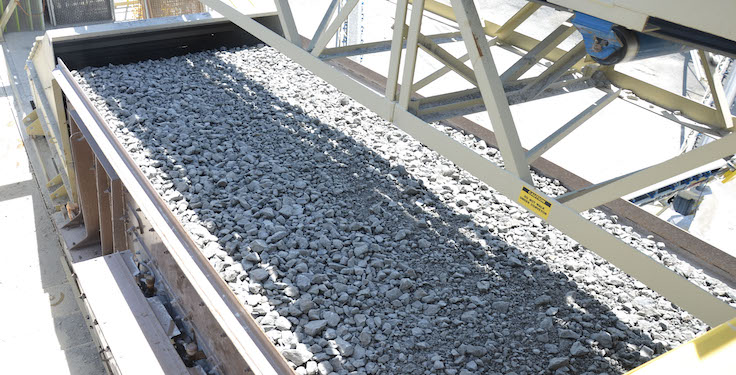Eight practices to keep screens up and running

Prior to installing screen media sections, make sure they’re appropriately square and flat so they will seat properly on the longitudinal support bars. (Photo: P&Q Staff)
Good preventive maintenance practices are a must for longer-lasting screens and reliable performance. Here are several that make for a solid maintenance program.
1. Establish an oil-sampling program. Although a commonly overlooked practice, a regularly scheduled oil sampling is an operator’s best insurance against catastrophic component failure and costly downtime. The insights provided by samplings allow operations to schedule maintenance downtime around periods of prime production. Scheduled sampling and analysis establishes a baseline of normal wear and can help indicate when abnormal wear or contamination occurs.
2. Employ recommended lubrication practices. Always consult an owner’s manual for a manufacturer’s recommended lubrication practices. Install the correct amount of oil, and use the recommended type of oil. Change the oil at the proper intervals, making sure the oil in storage is clean and that clean containers are used to transport it. Also, make sure the machine is completely level so oil does not pool at the low side of the machine.
3. Maintain proper belt tension. Belt tensioning must be right on target for optimum screen performance. Ideally, belts should only be tight enough so they don’t slip during startup. If necessary, use a belt gauge to set the correct tension. If belts squeal during startup or operation – or whip excessively – this may indicate insufficient belt tension.
4. Prevent material buildup. The accumulation of dust and stone around moving parts is one of the largest single causes of part failures, particularly for pivot motor bases, support springs, roller bearings and the vibrating frame. Impact between the vibrating frame and accumulated material may lead to tower vibrations, as well as potential side sheet and support deck cracking. Sheaves and belts are susceptible to material jumping over the side sheets and causing damage. Where possible, use stationary skirt plates or rubber flaps to deflect airborne material.
5. Maintain proper screen media support and tensioning. Uniform tension must be maintained on the screen surface to prevent whipping and to maintain contact between the screen surface and the bucker-up rubber on the longitudinal support bars. Improper tensioning may cause severe damage to screen media. Also, do not operate a vibrating screen with screen cloth or other screen media sections removed, as this will accelerate wear on the support frames and the longitudinal support bars.
6. Inspect for wear. Inspect cross members for signs of premature wear – especially in wet screen applications where wear is accelerated. Cover and protect the cross members, decking and housing tubes with rubber or urethane liners to extend their life. Prior to installing screen media sections, make sure they’re appropriately square and flat so they will seat properly on the longitudinal support bars.
7. Monitor spray systems. Use the required number of spray nozzles, and make sure they’re open and fully operational. Maintain the proper water volume and pressure. Avoid spraying perpendicularly to the screen surface, as this may result in a rapid deterioration of the screen surface. The spray should strike the screening surface at about 45 degrees. Nozzles can be positioned to spray against or with the flow of material. This choice depends upon the desired washing and rinsing efficiency and material properties.
8. Operate with proper clearances. Maintain adequate clearances around stationary structures, and never allow vibrating frames to hit stationary structures. Wherever possible, provide a minimum of 24-in. side clearance on each side of the machine. This enables the operator to adjust screen cloth tension and check the unit’s condition and operation. Additionally, allow sufficient clearance in front of the screen at the discharge end, or in the rear at the feed end, for replacing screen sections. Set the clearance at least one foot longer than the longest screen panel. Maintain a minimum vertical clearance of at least five inches between the vibrating frame and any stationary structures.
Information for this article adopted from Pit & Quarry University, which is available at pitandquarry.com.









